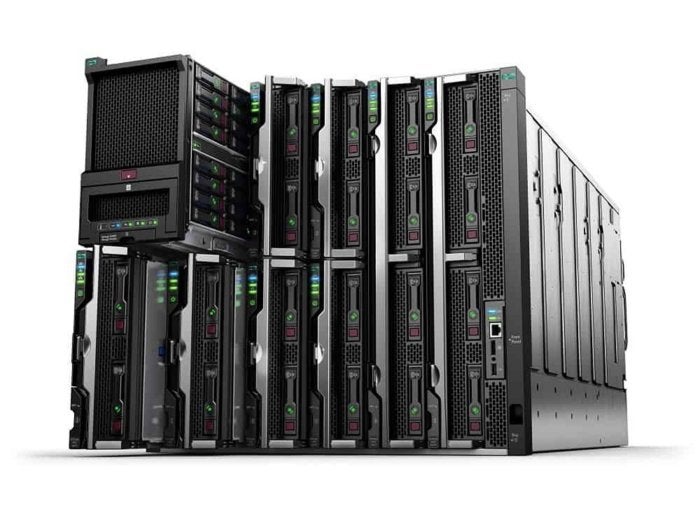8 Things to Consider Before Hopping on the Blockchain Train

There’s often a financial aspect that confuses some great ideas with how they’ll be monetized. Businesses that need capital to properly develop their blockchain solution often turn to ICOs, or initial coin offerings, to make it happen. With few regulations, countless projects are setting up a smart contract that offers contributors tokens in exchange for their BTC or ETH. Though it’s an easy way to get some liquid funding, launching an ICO comes with extra responsibilities, other than making a solid service or platform. You’ll also be beholden to a large community of speculators who have only one thing in mind: the price of the token. This complicates matters and may distract from the original goal. Companies like Telegram, though already fully funded and successful, have chosen to ICO even in the post-IPO phase, so that they can fund blockchain-specific projects without dipping into their coffers or raising money the traditional way. Smart contracts, which are a central part of most blockchain solutions, allow savvy programmers to create a tokenized ecosystem whereby all users benefit from participating.
4 reasons why 2018 is the year millennials create a flashpoint for the agile revolution
A recent Gallup poll published findings that millennials don’t want bosses-they want coaches and millennials don’t want annual reviews-they want ongoing conversations. In agile settings, frequent coaching conversations and immediate feedback are built into the framework. Indeed, some of the earliest resistance to agile came from senior and middle managers because they were forced to challenge their notion of how they add value and it required them to shift from delivering mandates to coaching and empowering. For example, the practice of retrospectives highlights how agile work teams use feedback and coaching to continuously improve. Millennials crave and respond well to these opportunities to better their performance. To borrow a phrase from Billy Joel, millennials “didn’t start the fire” when it comes to agile, however, they are poised to fan the flames as the framework is adopted in new industries and continues to be an effective means to solve problems, produce new products and meet customer needs.
3 factors CIOs must address to stay at the strategy table

Successful CIOs and CISOs are able to educate and communicate with boards of directors. Are you speaking in their language? I talk to many boards, and while the members are hungry for information about these issues, they struggle with context and practicality. For example, it might be easy to see technology’s role in an email outage, but less clear what role new technologies and information security play in preventing a supply-chain disruption. Directors always understand the financial impact, and the more sophisticated CIOs are adept at translating their team’s work into the financial terms that board members get right away. ... In summary, failing to do these things might not have immediate consequences – and perhaps you’re not doing all of these things right now. But by neglecting these aspects of your leadership role, you will cede that responsibility to someone else. On the other hand, by paying attention to them, you will bolster your credibility in the age of digital business.
Linux on Raspberry Pi: SUSE support turns $35 board into enterprise IoT platform
Today Upton is thrilled because SLES 12 SP3 is the first time a major vendor has offered a full, commercially supported Raspberry Pi image. "Unlike two years ago when they just provided a downloadable image with community support, SUSE can now offer 12 x 5 or 24 x 7 support," writes Upton. "This is all built on the same SUSE Linux that is available on everything from Raspberry Pi to the mainframe." According to SUSE, companies have been using SLES for Arm on Raspberry Pi for monitoring older industrial equipment such as robotic screwdrivers and sending alerts when they malfunction. The new SUSE Raspberry Pi image still targets the Raspberry Pi Model 3 B, although SUSE says it is planning support for the new Raspberry Pi Model 3 B+. The new version also contains a few updates and fixes. According to SUSE, developers have made the new image smaller -- around 630MB -- by trimming compilers and debugging tools while tuning the Arm OS for IoT tasks.
1.4B stolen passwords are free for the taking: What we know now

Single-factor authentication based on "something you know" (e.g., a password) is no longer an acceptable best practice. "I'm pretty well convinced passwords are a horrible system," Professor Douglas W. Jones of the University of Iowa, says. "If someone knows your old passwords, they can catch onto your system. If you're in the habit of inventing passwords with the name of a place you've lived and the zip code, for example, they could find out where I have lived in the past by mining my Facebook posts or something." Indeed, browsing through third-party password breaches offers glimpses into the things people hold dear — names of spouses and children, prayers, and favorite places or football teams. The passwords may no longer be valid, but that window into people's secret thoughts remains open. These massive dumps of free passwords lower the cost of an attack dramatically. Password reuse or password guessing attacks are script kiddie stuff. Defending your organization against such threats is basic due diligence.
10 Machine Learning Algorithms You Should Know to Become a Data Scientist
Machine learning practitioners have different personalities. While some of them are “I am an expert in X and X can train on any type of data,” where X = some algorithm, others are “right tool for the right job” people. A lot of them also subscribe to a “Jack of all trades, master of one” strategy, where they have one area of deep expertise and know slightly about different fields of machine learning. That said, no one can deny the fact that as practicing data scientists, we have to know basics of some common machine learning algorithms, which would help us engage with a new-domain problem we come across. This is a whirlwind tour of common machine learning algorithms and quick resources about them which can help you get started on them.
11 outsourcing myths debunked

Third-generation outsourcers may think they know everything there is to know about structuring engagements for success, but the reality is that the fundamentals of value creation from outsourcing have changed significantly. Consumption-based pricing is replacing fixed-price models. Contracts designed for efficiency and cost reduction have given way to deals aligned to business outcomes and growth. “The fundamental mindset needed to succeed is very different, and a contract written for efficiency does not align with a contract that needs to drive growth,” says Jimit Arora, partner in Everest Group’s IT services research practice. “Smart clients recognize the limitations of previous templates and are willing to make changes. Clients that want to simply re-purpose because they think it is ‘old wine in new bottle’ are going to struggle with ineffective contracts.” ... The typical outsourcing deal is built to reduce disruption and risk associated with major change. Indeed, both the buyer and service provider account teams are incentivized to protect the status quo, says Bob Cecil
What is composable infrastructure?

IT resources are treated as services, and the composable aspect refers to the ability to make those resources available on the fly, depending on the needs of different physical, virtual and containerized applications. A management layer is designed to discover and access the pools of compute and storage, ensuring that the right resources are in the right place at the right time. The goal is to reduce underutilization and overprovisioning while creating a more agile data center, says Ric Lewis, senior vice president and general manager of the software-defined and cloud group at Hewlett Packard Enterprise, which offers the Synergy composable infrastructure platform. “When a customer logs onto a public cloud, they grab a set of resources: compute, storage, fabric. ‘I need this much stuff to be able to run this application. Please give that to me," Lewis says. "I’ll run this application, and when I’m done, I’ll give it back to you and you can use it with somebody else,’” “What we did with composable infrastructure is build that into the platform. We can do the same dynamic resource sharing.”
Facebook cuts ties to data brokers in blow to targeted ads
The world’s largest social media company is under pressure to improve its handling of data after disclosing that information about 50 million Facebook users wrongly ended up in the hands of political consultancy Cambridge Analytica. Facebook adjusted the privacy settings on its service on Wednesday, giving users control over their personal information in fewer taps. Facebook has for years given advertisers the option of targeting their ads based on data collected by companies such as Acxiom Corp and Experian PLC. The tool has been widely used among certain categories of advertisers - such as automakers, luxury goods producers and consumer packaged goods companies - who do not sell directly to consumers and have relatively little information about who their customers are, according to Facebook. “While this is common industry practice, we believe this step, winding down over the next six months, will help improve people’s privacy on Facebook,” Graham Mudd, a Facebook product marketing director, said in a statement.
Sensors and machine learning: How applications can see, hear, feel, smell, and taste
In essence, classifying objects with machine or deep learning is first a matter of “seeing” a lot of instances of a sheep or a cat, including various derivatives (big ones, little ones, furry ones, less-furry ones, skinny ones, fat ones, tailless ones). Then it is a matter of training a model that recognizes all of the variants. While Facebook and Google are clearly putting the most weight into this field, there are other tools like the venerable OpenCV library, a grab-bag of functionality, and OpenFace, which is focused on just facial recognition. There is even Jevois (French for “I see”), a smart camera for Arduino devices that has pretrained models based on open source libraries. ... For speech recognition, you can find open source implementations that use the more traditional Hidden Markov models like CMUSphinx and Kaldi use a neural network. There are other implementations, but the breakdown is between online and offline decoding. “Online” means can you read off a mic; “offline” means you have to wait until you have a .wav file.
Quote for the day:
"You may be good. You may even be better than everyone esle. But without a coach you will never be as good as you could be." -- Andy Stanley
No comments:
Post a Comment